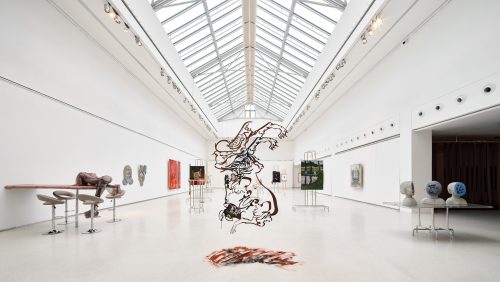
Kerstin von Gabain
Imitation
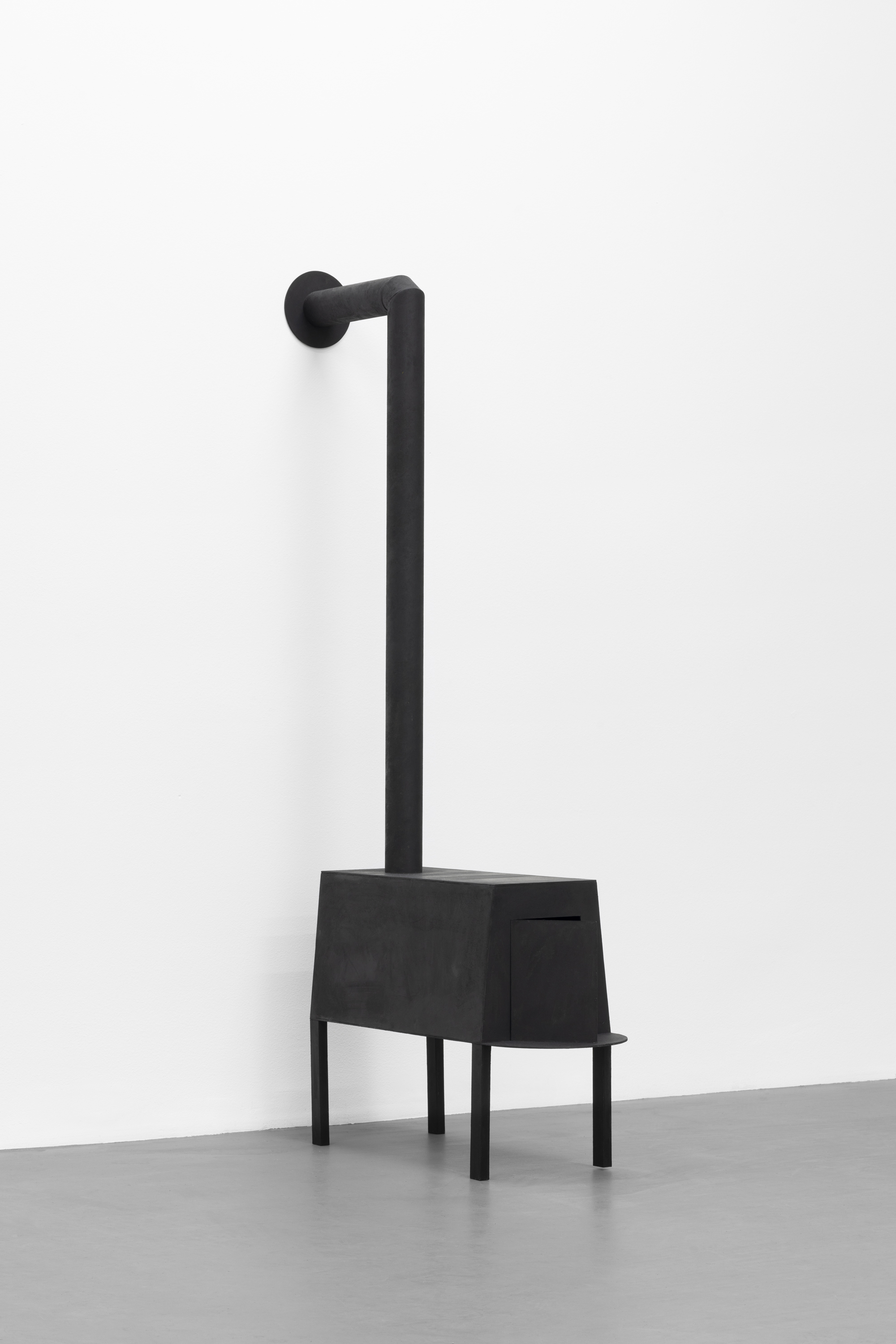
Kerstin von Gabain, Stove I, 2022, cardboard, oil paint, 145 x 24 x 78 cm
Advertisement
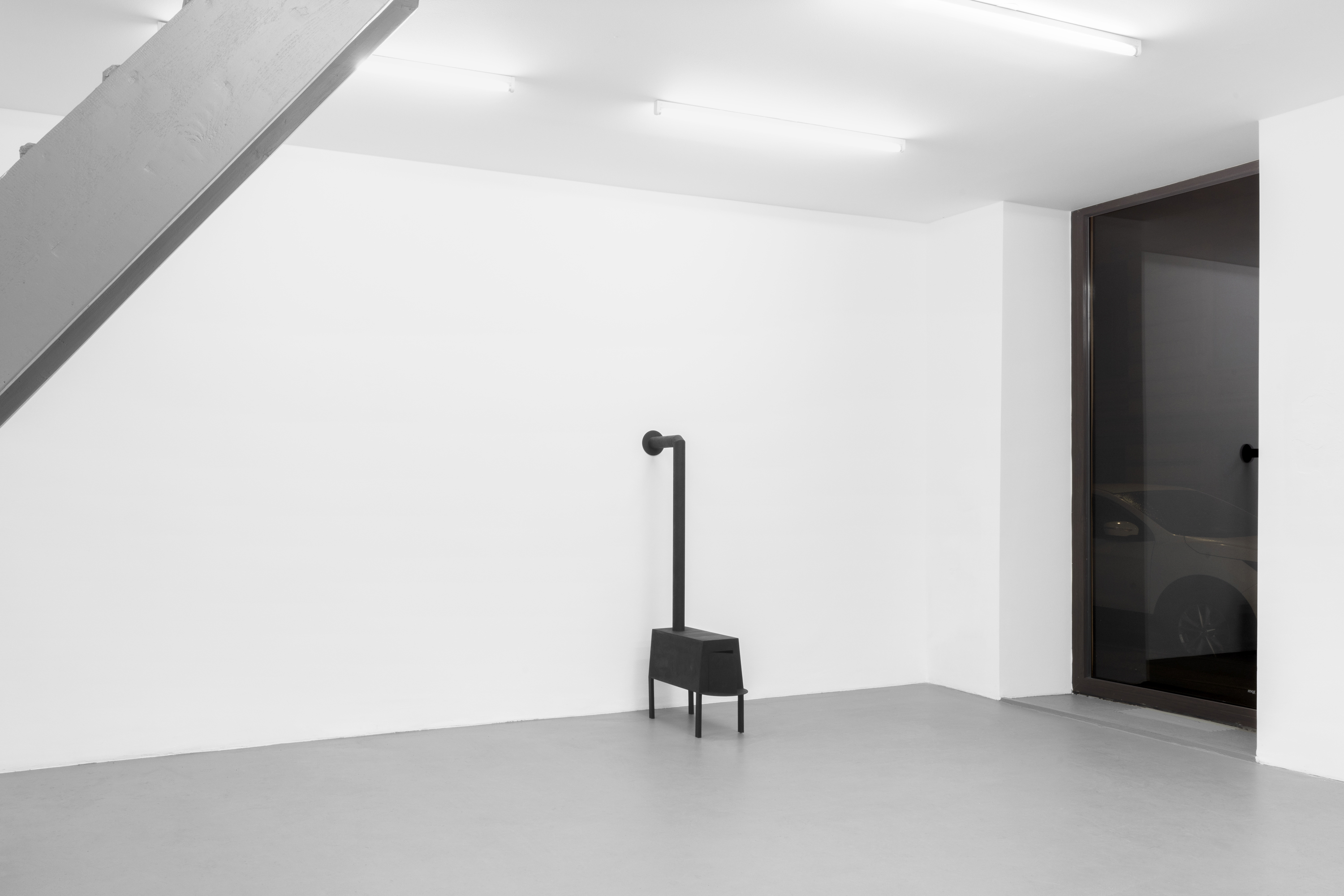
Kerstin von Gabain, Imitation, Installation view, EXILE, 2023
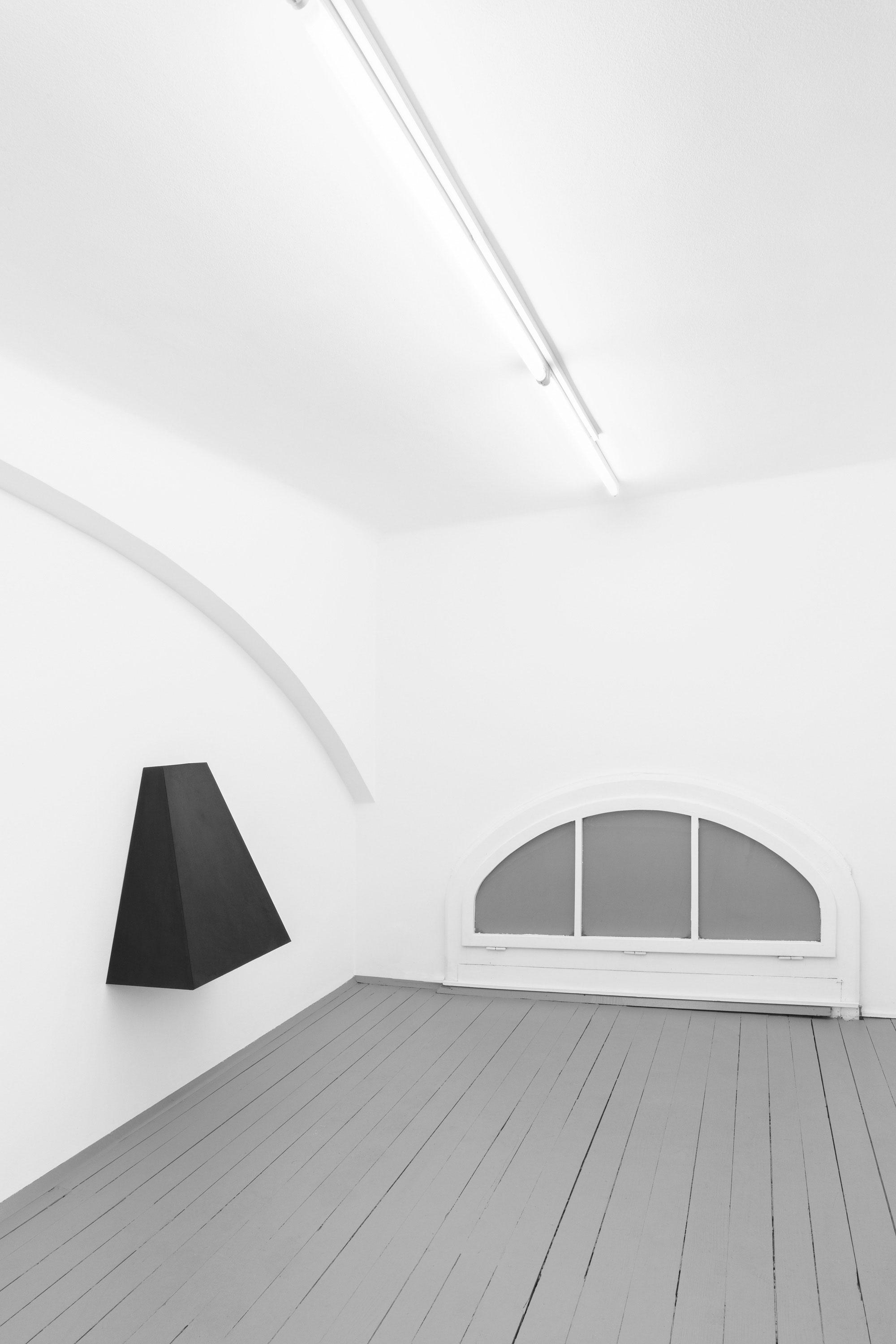
Kerstin von Gabain, Imitation, Installation view, EXILE, 2023

Kerstin von Gabain, Furnace II, 2023, cardboard, oil paint, 62 x 52 x 30 cm

Kerstin von Gabain, Imitation, Installation view, EXILE, 2023
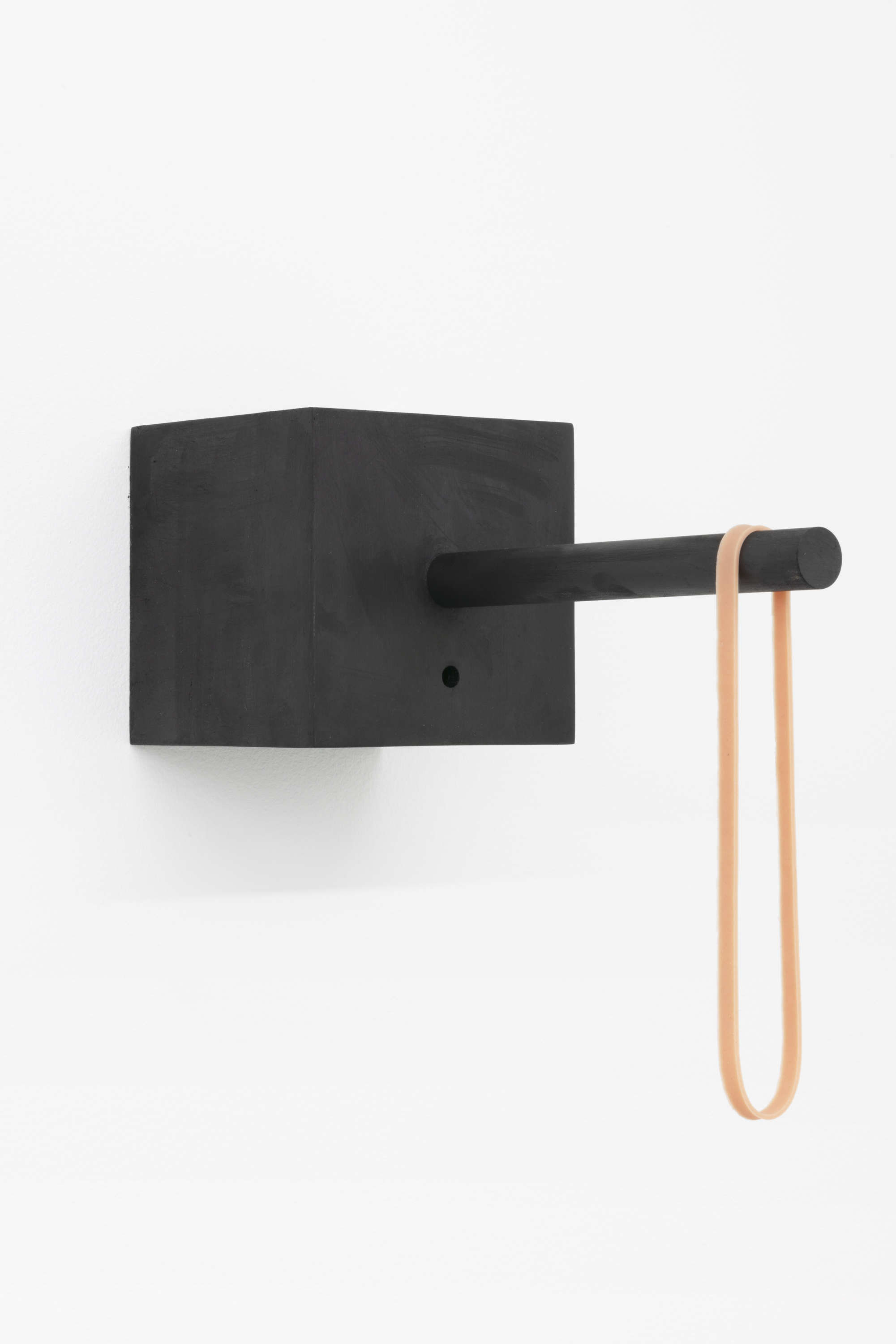
Kerstin von Gabain, Pinocchio, 2023, wood, oil paint, silicon, 30 x 15 x 40 cm
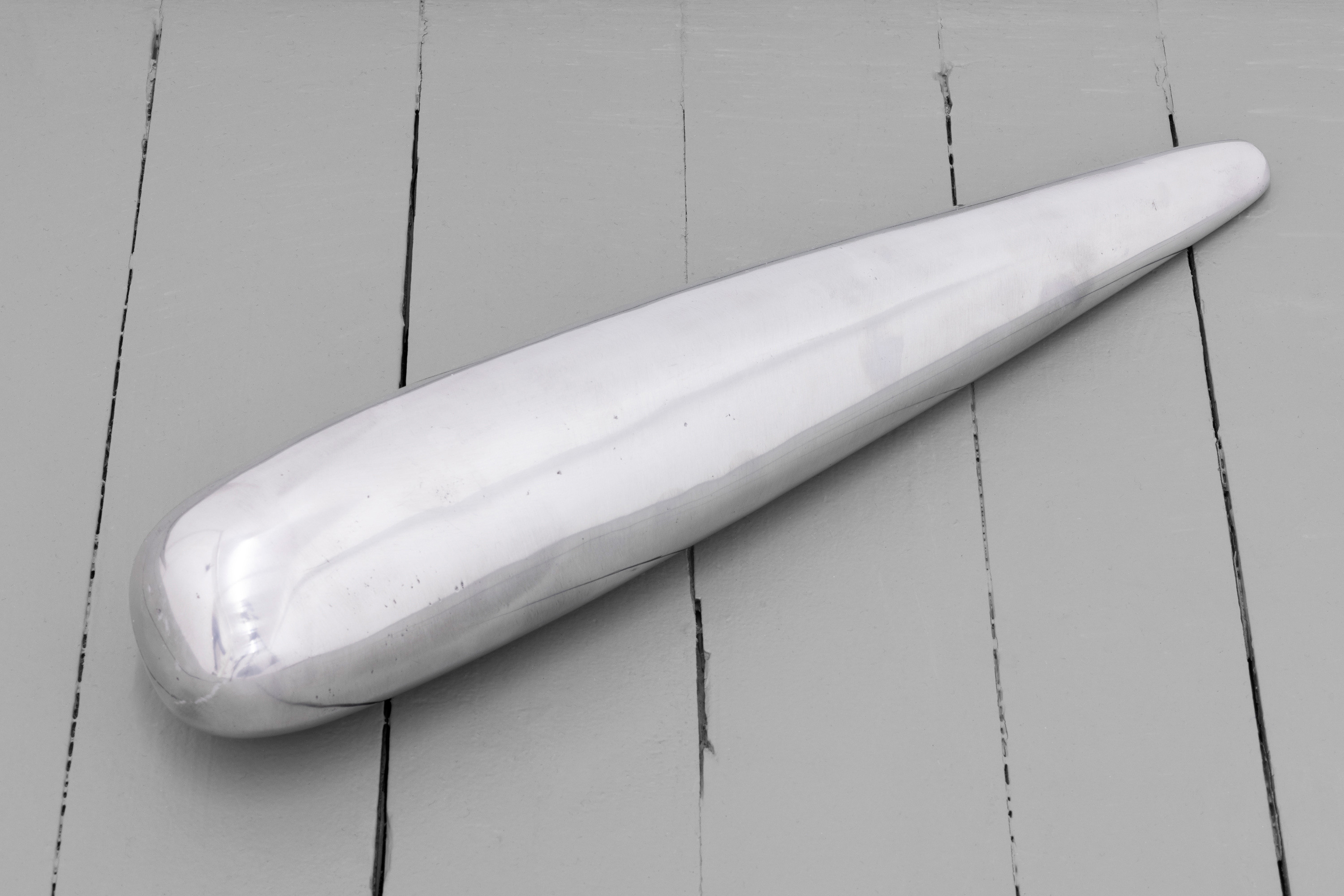
Kerstin von Gabain, Beinchen, 2022, aluminum, 8 x 8 x 42 cm
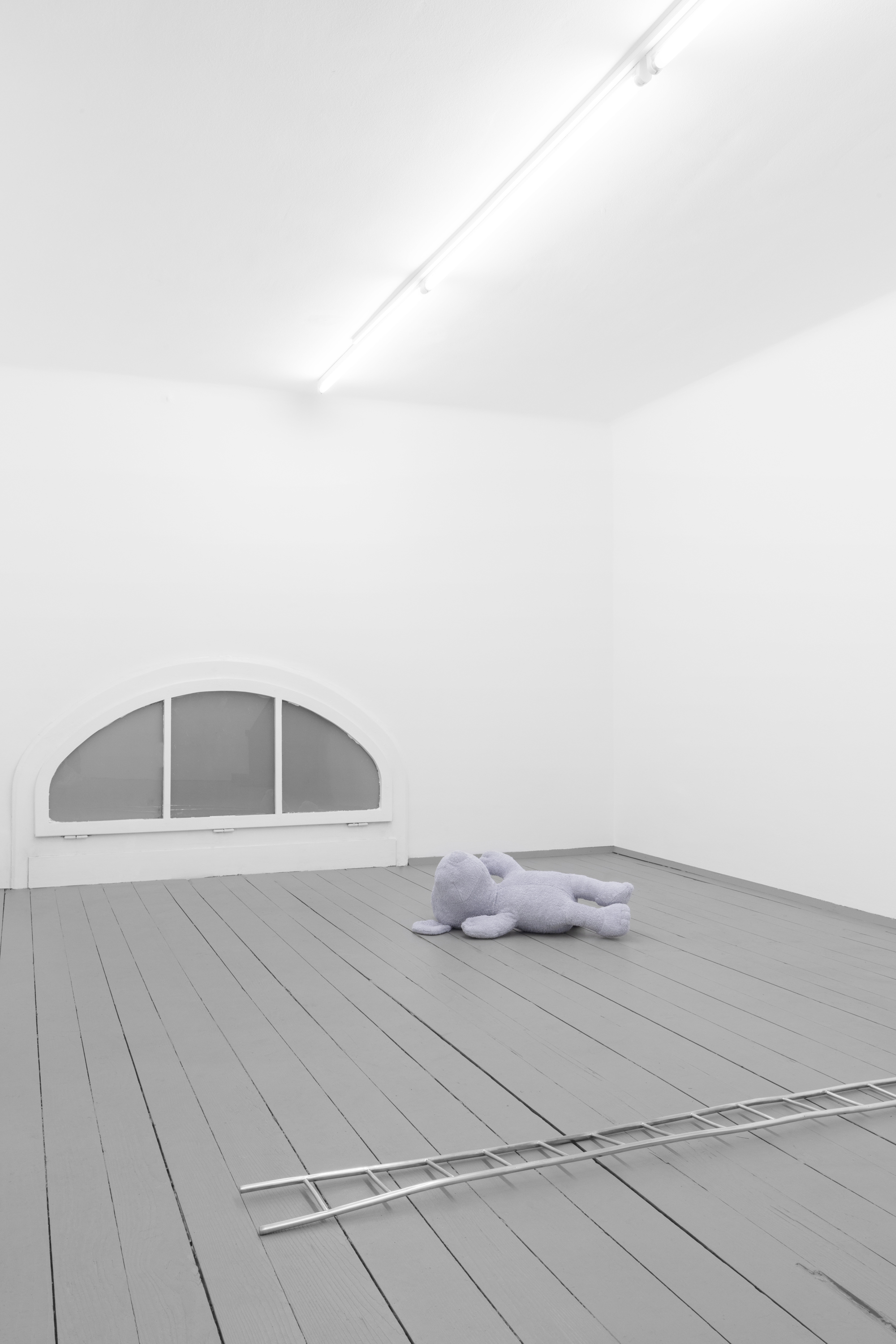
Kerstin von Gabain, Imitation, Installation view, EXILE, 2023
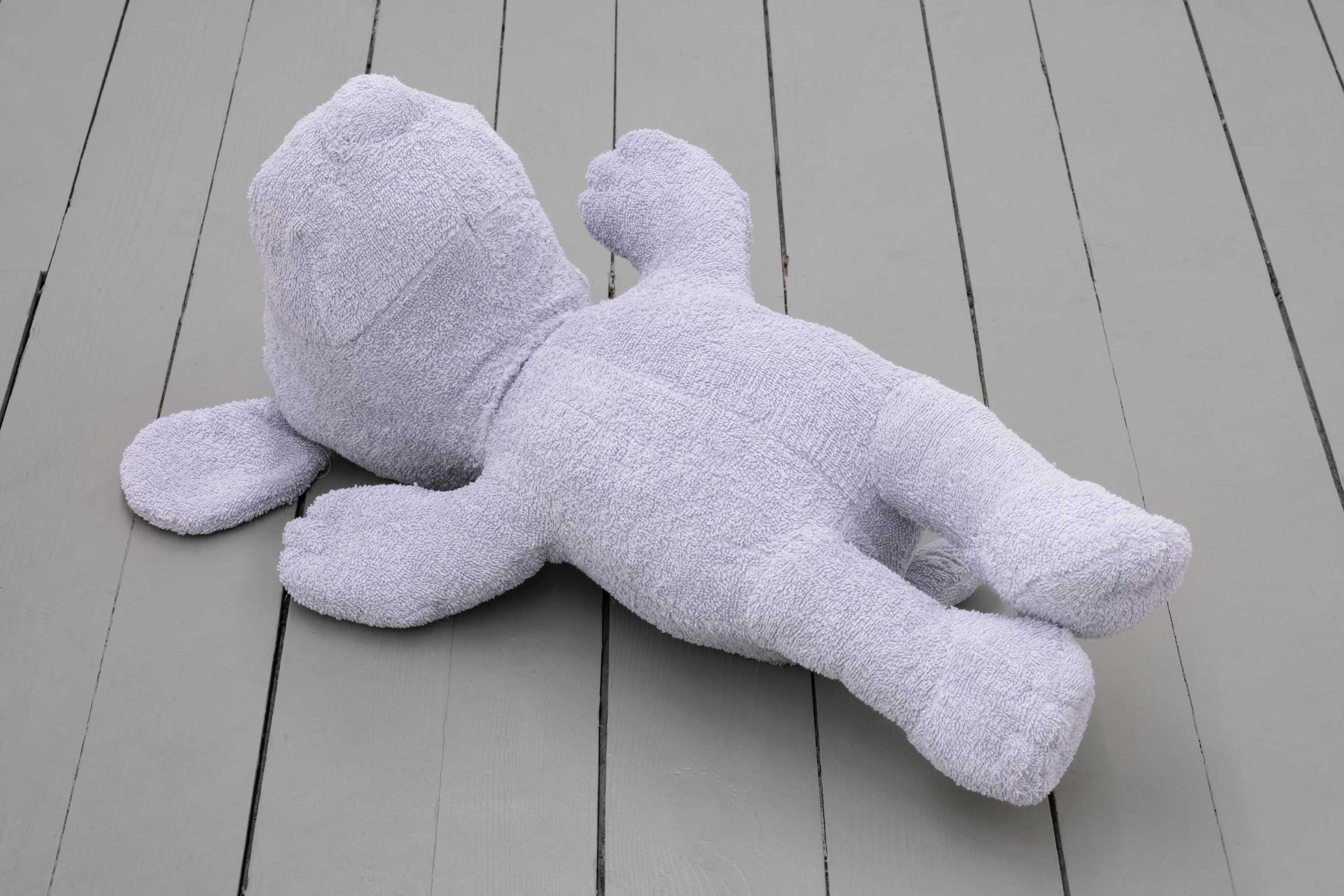
Kerstin von Gabain, Snoopy, 2023, frottee, filler, 3 x 37 x 66 cm
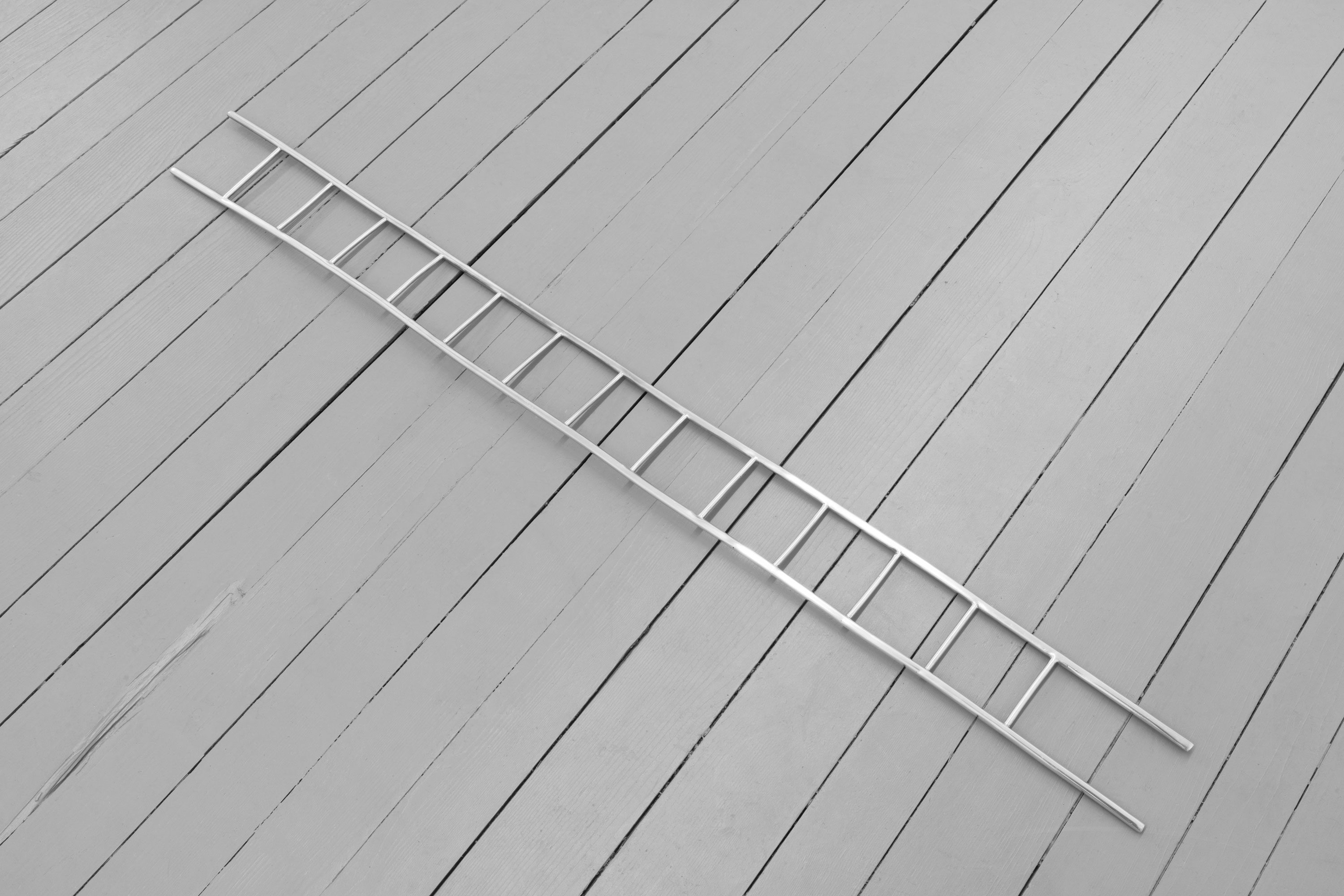
Kerstin von Gabain, Ladder I, 2023, aluminum, 3,3 x 13 x 145 cm
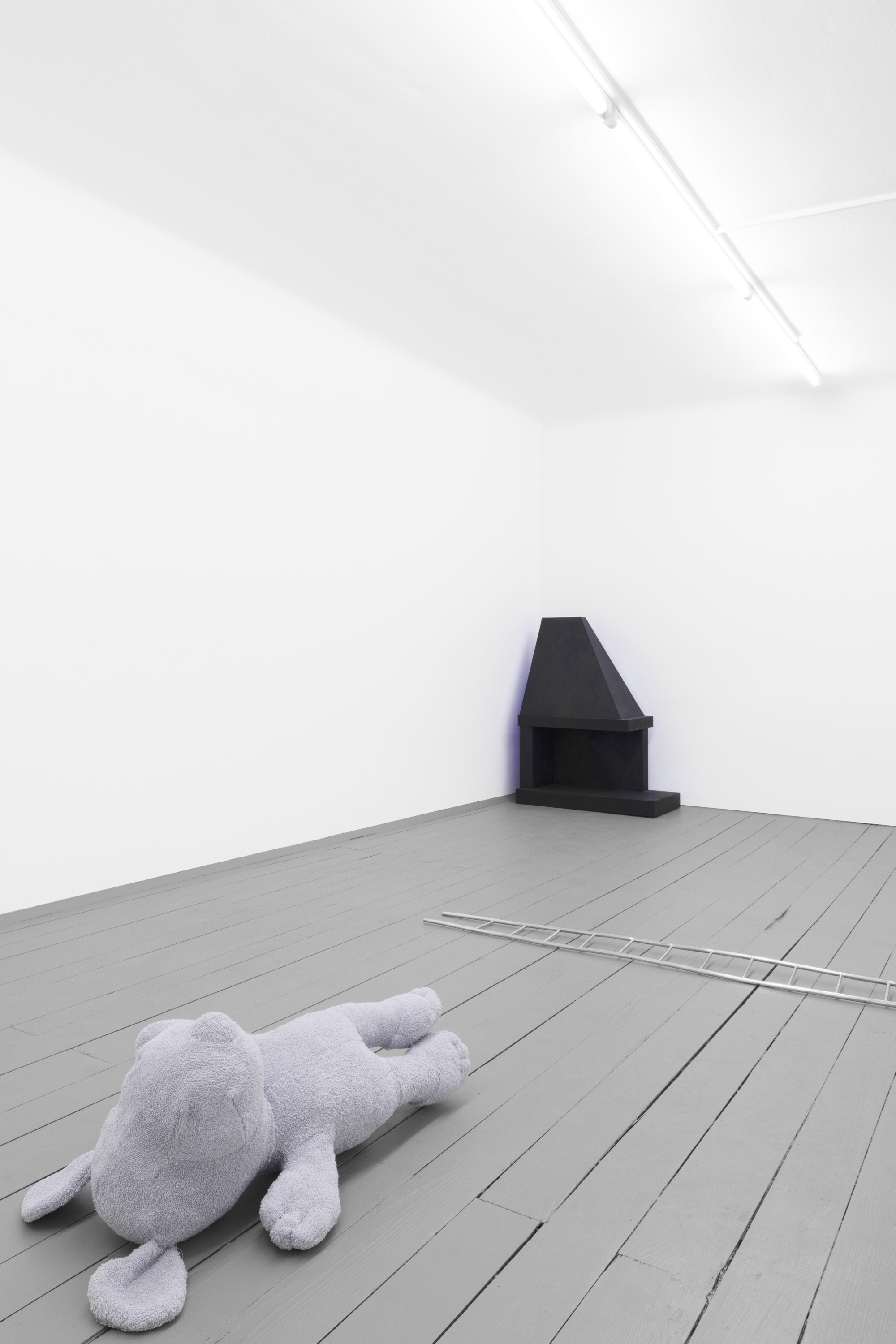
Kerstin von Gabain, Imitation, Installation view, EXILE, 2023
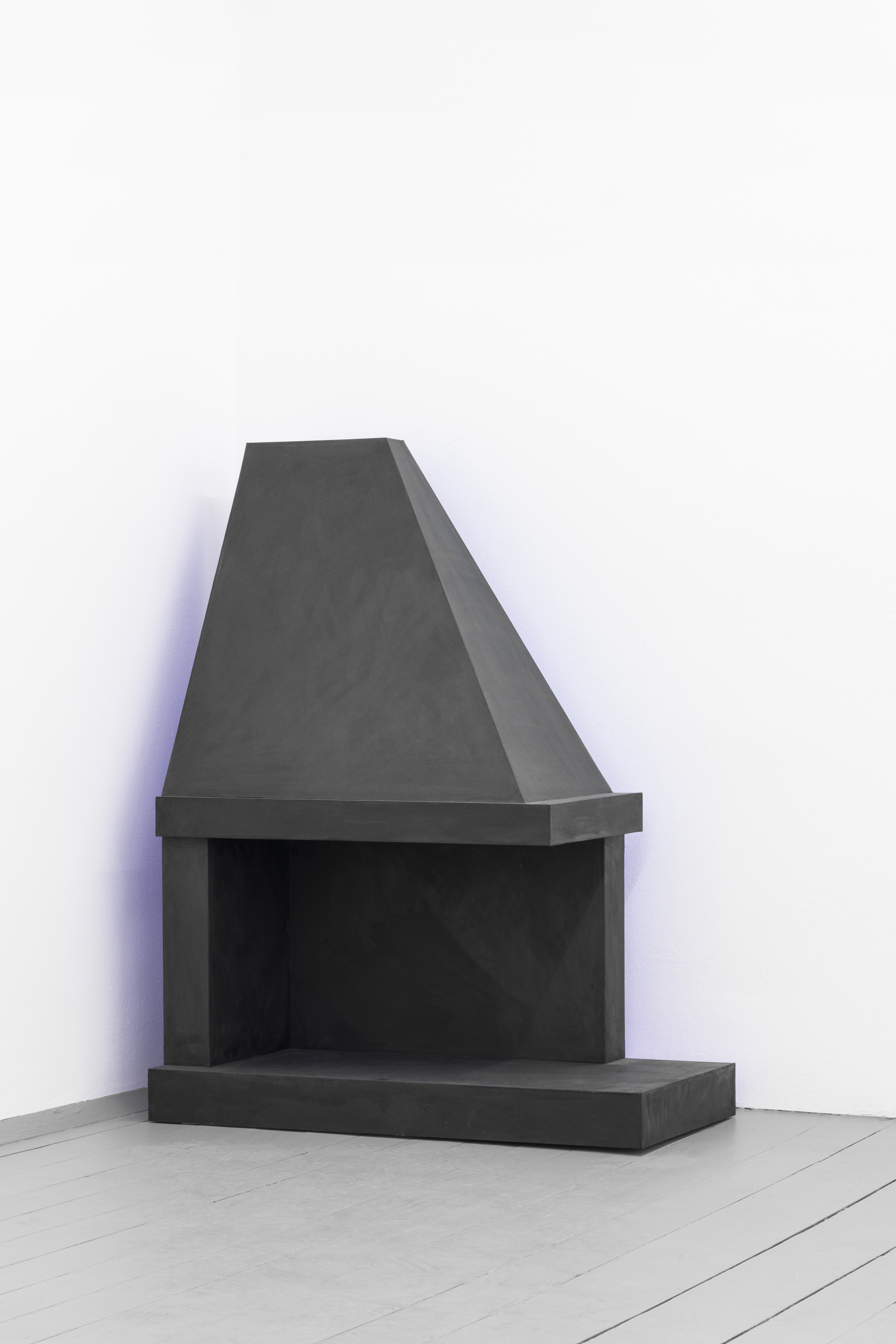
Kerstin von Gabain, Fireplace, 2022, cardboard, oil paint, 95 x 72 x 36 cm
Reproductions, casts and miniatures are false objects, but they possess a genuine psychological objectivity. They imitate, mimic, take as inspiration another object, but are not the same thing. They fictionalize their model, the possible functionality, thus allowing a playful curiosity to emerge.
The works in Imitation were created through an examination of proportions, the imitation, casting and alienation of a (supposed) original. A small-format stove on unsteady legs conveys a comical seriousness: being imperfectly made, even made of cardboard – it would go ablaze, if you actually wanted to use it to make fire. A ladder lies on the floor, slightly bent and deformed, it rather creates a tragic image instead of representing steadiness, linearity and construction. Both works are larger versions of originally made miniatures, but still they don’t match the ‘original’ size, something is slightly off. They imitate, try to get as close to their model as possible; but the proportions don’t fit, they can only point towards, but never become the thing itself. Not only do they imitate another object: they also mimic the human body, its gestures, clumsiness, posture. Their current positioning seems to be preceded by an autonomous movement, as if they were briefly animated, alive, only to finally remain in their place.
When objects come alive, when something very ordinary, an every-day thing, changes its way of being, the German word unheimlich comes to mind. The uncanny, in psychoanalysis, is the kind of frightful which goes back to the long-known, familiar1, the Heimelige. It produces fear when something familiar has been estranged by repression. Initially evoking a sense of childlike play and conjuring up familiar images, but then distorting and disrupting these images and likenesses, the works in the exhibition create a sinister atmosphere. Perchance, dear reader, you will then believe that nothing is stranger and madder than actual life, and that this is all that the poet can conceive, as it were in the dull reflection of a dimly polished mirror.2
Mimesis is Greek for imitation. In aesthetic theory, mimesis can also connote representation, and has typically meant the reproduction of an external reality, such as nature, through artistic expression. The act of mimesis contains questions regarding true or false, superior (original?) and inferior (copy?). But imitation can also be linked to inner experiences and emotions, not just objective reality or nature. To imitate, mimic, emulate also has to do with social practices and intersubjective relationships. It means to learn, practice and grow. Maybe an imitation can never refer to an original source, since it is always ‘doubled’–always already deconstructed.
In Imitation, mimesis is used as a tool. It mediates between the outside world and its reflection within an artistic work. The works refer to concrete bodily and material forms that are put together differently through ruptures, disturbances, and displacements, thus creating a situation in which the disjointed and alienated come to the fore. Their appearance has an untimely character; in their composition they become simultaneously futuristic and historic. Imitation as a dead end. Always already different, almost doomed to failure. A tragi-comical loop.
1https://literaturkritik.de/id/21719
2E.T.A. Hoffmann, Der Sandmann
Inga Charlotte Thiele


